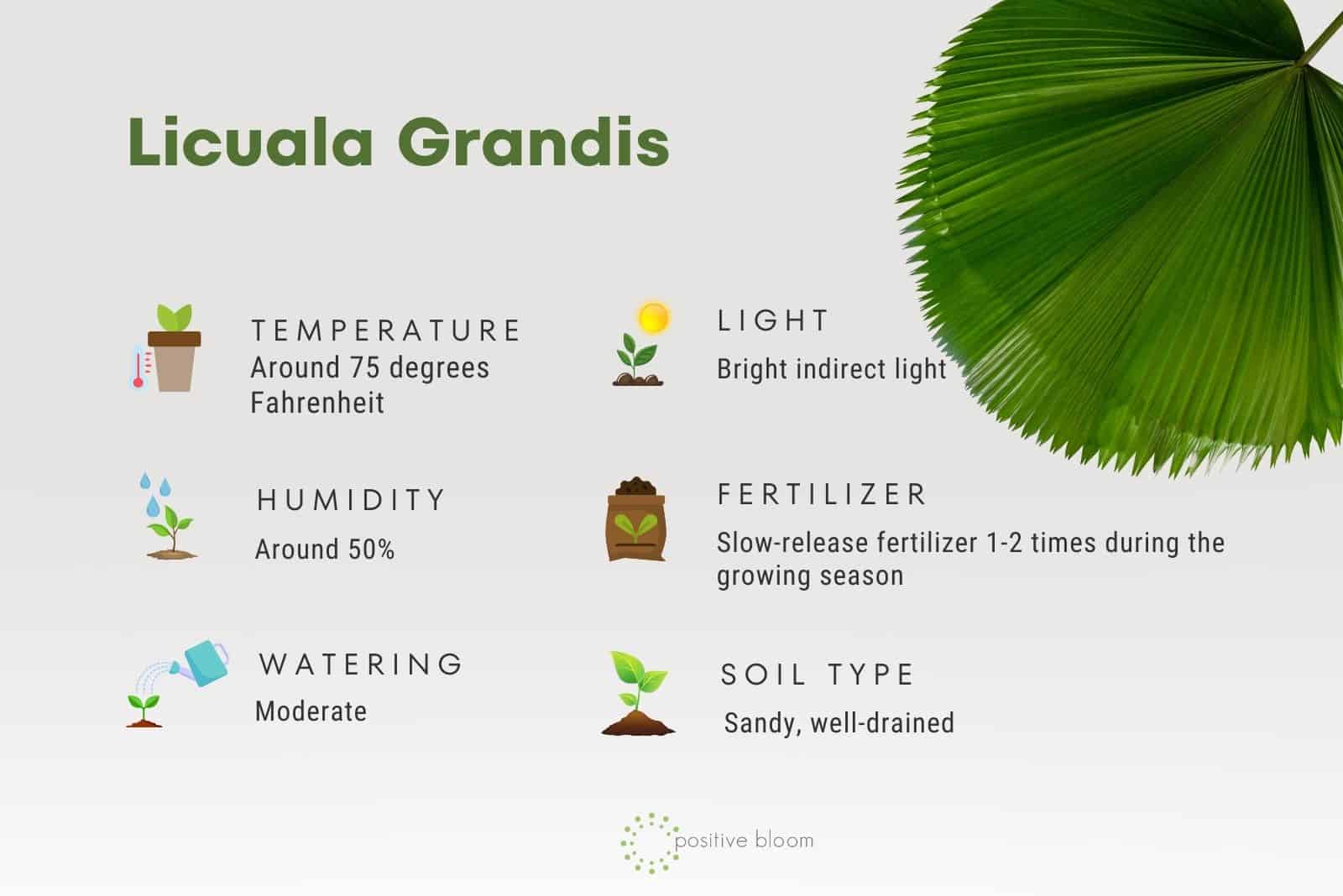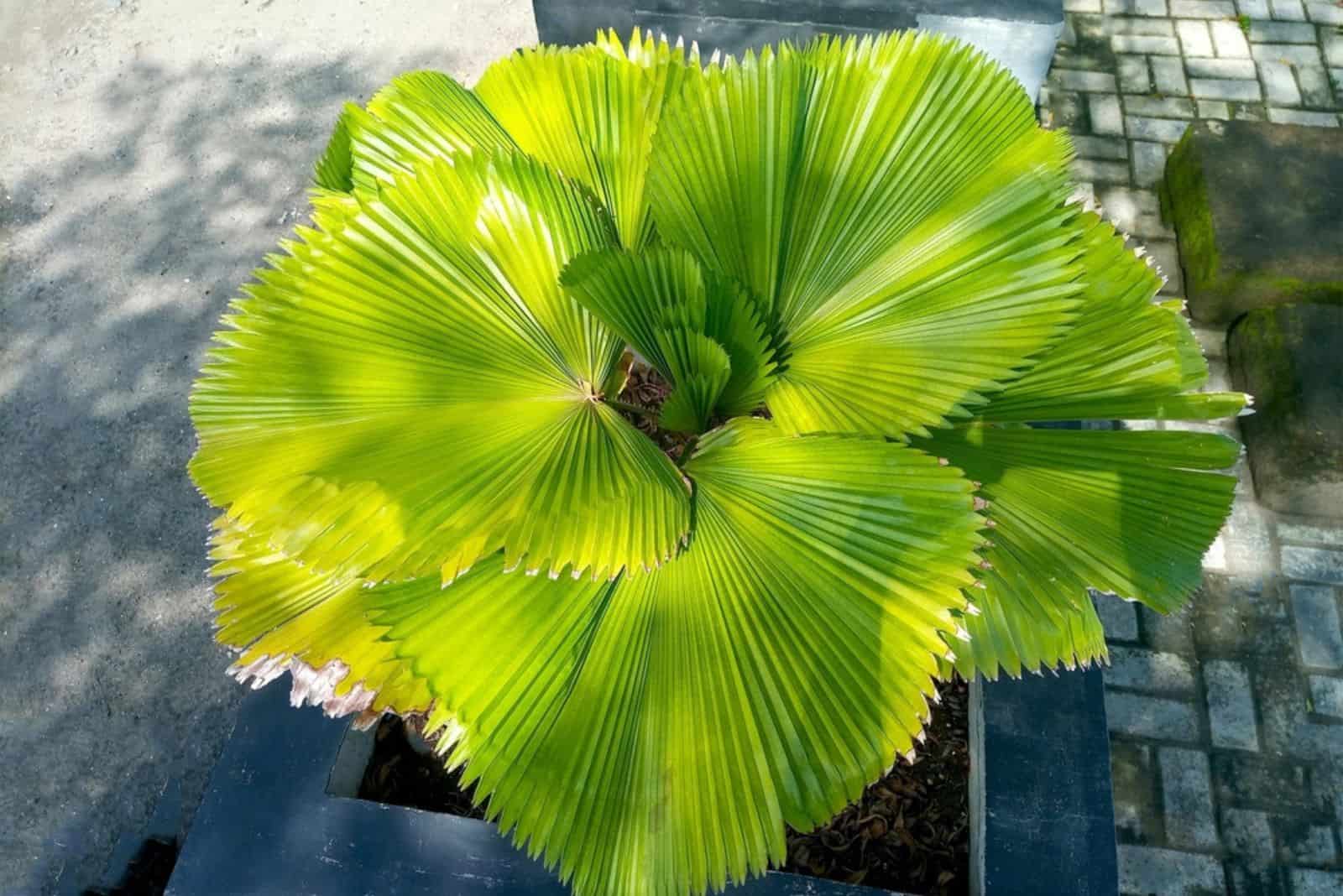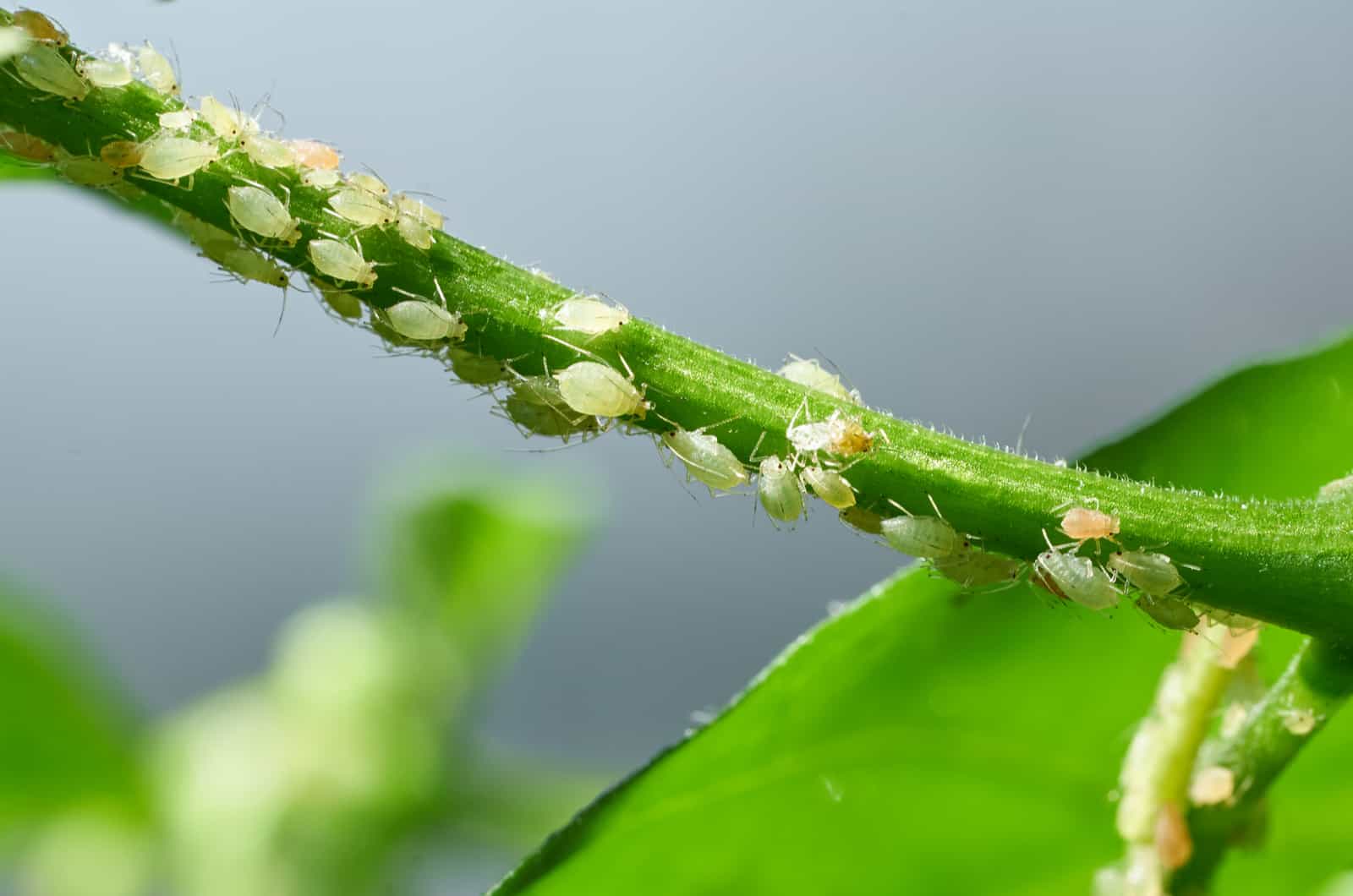Palm trees look absolutely fantastic whether they’re grown indoors or outdoors. We are all kinda used to tall varieties with recognizable woody trunks, but today I’m going to tell you about a palm variety that really stands out; the Licuala grandis, an uncommon palm species with an exquisite appearance.
This is a dwarfish palm compared to its cousins, so it’s suitable for smaller apartments.
What makes this palm so special are the fronds that develop into the shape of a fan, hence the common name “Ruffled fan palm”.
We’ll go through the Licuala grandis features, care requirements, propagation methods, and common issues.
[table id=658 /]
What Is The Licuala Grandis?
According to research on the Morphological diversity of the genus Licuala, the Licuala genus encompasses 141 species. The grandis species has been described as having orbicular leaves and are the most commonly cultivated species with this leaf form.
You must admit that the name “Ruffled fan palm” is the best description of palms you can get. This palm is perfect for indoor cultivation, especially if you want to create a sort of mini jungle.
If you live in a warmer climate, you can grow this Licuala plant outdoors to create a tropical landscape.
Unlike other common palms, the grandis variety produces quite a thin trunk. The fragrant, yellow-white flowers typically appear in the middle of the summer and give way to circular, red fruit.
This palm typically reaches 9 feet tall and has a slow growth rate, so you may have to wait a little bit longer for the plant to establish fully, though you will be able to enjoy it for about 50 years.
Now, let’s see how to take care of the incredible grandis plant.
How To Care For The Licuala Grandis
When you look at the plant, you would think you need to do a lot to maintain such beauty. Well, the truth is luckily a little bit different.
Let’s see what that means!
Light Requirements
Ruffled fan palms are native to tropical regions and they grow under tall plant species, which means their lovely foliage isn’t exposed to direct sunlight.
When grown indoors, the grandis palm requires bright indirect light in order to maintain its health and vigor.
Even though some growers claim that they keep their Licuala palms outdoors in full sun, I strongly disagree with that.
Of course, shady spots without much sunlight aren’t an option since these plants need bright light.
Watering Schedule
Watering the Licuala grandis species can be tricky for beginner growers. Your goal is to maintain soil moisture and prevent waterlogging at the same time.
I use one simple method for all my plants; inserting a finger in the soil to check moisture is the easiest way to determine if your plant needs water.
If the soil is dry a little bit below the surface, your grandis plant needs watering.
Remember that overwatering is the most frequent cause of the death of palm trees, no matter the species.
Also, never water over the palm foliage since it can rot, and that’s the last thing we need.
Humidity And Temperature Requirements
Just like all other plant species native to tropical rainforests, Licuala plants can’t withstand low humidity.
The main problem is that water will evaporate slower from the growing medium if your palm grows in low humidity. As a result, you’ll end up with an overwatered palm quickly.
Keep humidity for your Licuala grandis at around 50% and it will reward you with glossy green foliage.
The ideal temperature for the Ruffle fan palm is 75 degrees Fahrenheit. Of course, slightly higher or lower temperatures won’t cause any trouble.
But remember that this palm doesn’t respond to frost well, so don’t let the temperature drop below 60 degrees Fahrenheit.
If you live in USDA hardiness zones 10b and above, your prized Licuala plant will thrive outdoors.
Make sure to protect your Ruffled fan palm plant from direct sunlight. If you grow this palm as a houseplant, move it away from radiators, heating vents, and drafty windows.
Perfect Soil Type
When choosing the perfect soil for your palm tree you need to consider a few things; first, choose a soil substrate enhanced with well-draining materials. Second, don’t go with soil mixes that don’t contain water-retaining materials.
You can either use store-bought soil substrates suitable for palm trees or make one yourself. You need perlite, sphagnum moss, potting soil, and sand.
The combination of these ingredients will ensure enough nutrients for your Licuala grandis and save it from root rot.
Fertilizing Schedule
I love plants that don’t require much fertilization. This plant looks fantastic, and you can maintain its looks and keep it healthy by applying slow-release fertilizer 1-2 times during the growing season.
Your grandis palm will hibernate during winter months, so there’s no need to feed it.
Be careful not to add more fertilizer than recommended because you can burn the roots of your Licuala.
I feed my grandis at the beginning of the growing season, and the plant is really happy.
Potting And Repotting
Repotting is my least favorite part of Licuala grandis plant care because I am always scared that I’ll damage it.
Luckily, the Ruffle fan palm doesn’t need frequent repotting because it’s a slow grower, so doing it every 2-3 years will suffice.
One of the biggest benefits of repotting is replenishing the nutrients, so even if your palm looks healthy after 2-3 years, you should repot it.
How To Propagate The Ruffled Fan Palm
I can’t say the Licuala grandis is hard to propagate, but the thing is that it takes some time. You can either propagate using transplants or try seed propagation.
You can cut off the Ruffled fan palm suckers and plant them in a suitable growing substrate. Alternatively, purchase seeds and seed-starting mix.
The good news is that propagation of the Licuala plant rarely fails, but you need to be really, really patient.
Common Issues
My Licuala grandis had a spider mite infestation a few years ago. This happened because my Monstera had pests and they started spreading.
Well, this is a common scenario in indoor plant cultivation. I fixed the issue with neem oil; I refer to this ingredient as a treasure since it has saved so many houseplants from severe infestation and damage.
Other pests, such as aphids and mealybugs, can also visit your Ruffled fan palm, but if you treat the plant in time, the issue will be quickly fixed.
Root rot is the thing you should be most afraid of. This is a common disease in palm plants, and the most frequent signs of root rot are yellow palm leaves. Other signs include wilting, foul odor, drooping, and mushy soil.
The only way to fix root rot in the Licuala plant is to repot it and eliminate all the diseased roots.
I mentioned that you need to keep palm soil moist, so if you underwater your plant, it’ll start wilting and show leaf discoloration.
Direct sunlight may cause Licuala grandis palm leaves to turn yellow and get severely sunburned.
Inspect your Licuala plant regularly; the sooner you spot the issue, the easier it will be to fix it!
Wrapping Up
The Licuala grandis is an unusual palm species; its unique fronds develop into a fan-like shape, making this palm desired by many growers.
It’ll add a tropical touch to your apartment, and it can adorn your outdoor garden if you live in a warmer climate.
Another great thing about this palm species is that it’s non toxic, so you don’t need to keep it away from toddlers or pets (well, it might depend on how curious they are!).
Until next time!





